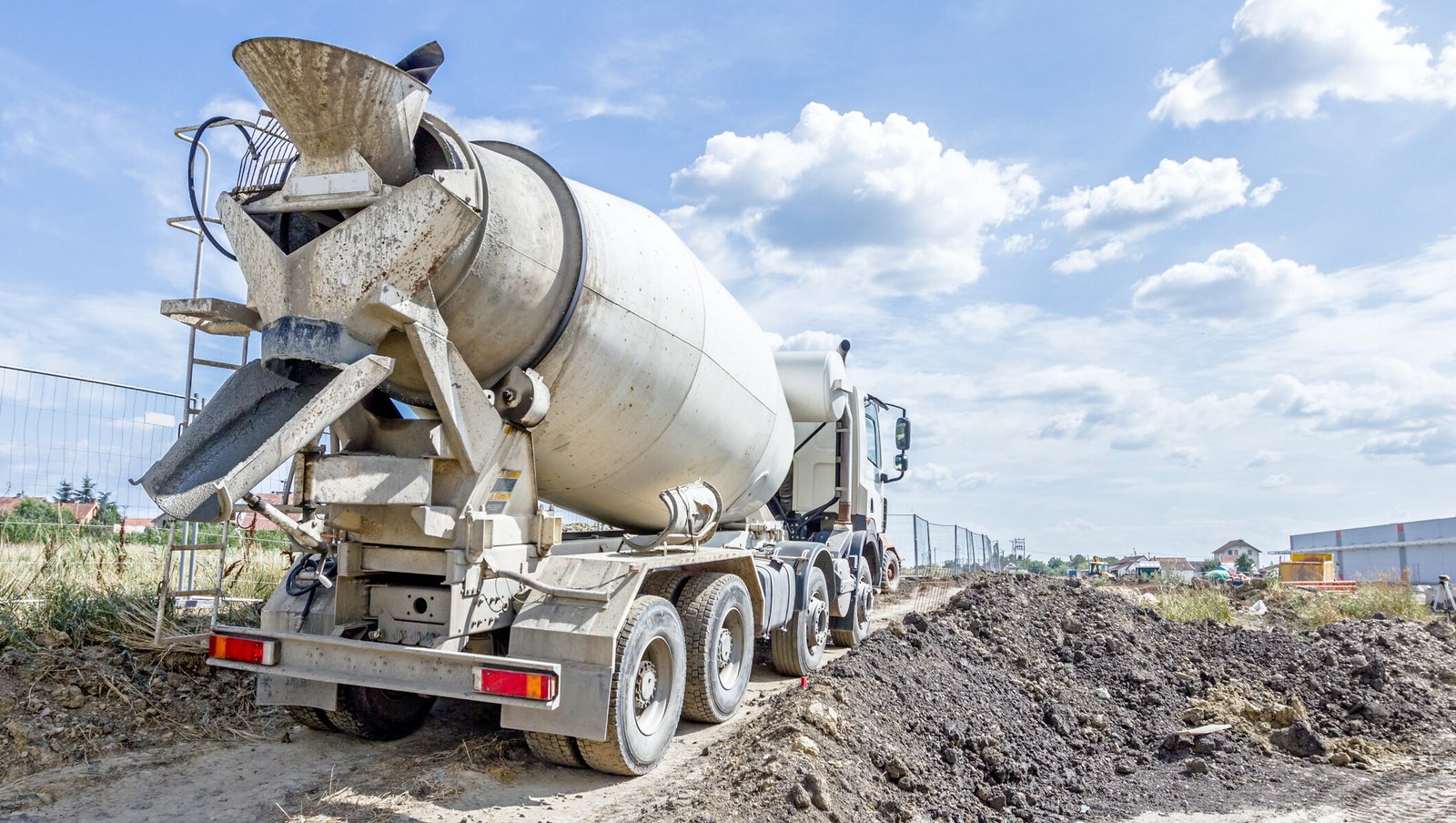If you’ve ever planned a driveway, patio, or foundation pour, you’ve probably asked yourself: how many yards of concrete are in a truck? It’s not just trivia — it’s the key to budgeting, scheduling, and avoiding costly mid-pour delays. Understanding the capacity of a concrete truck helps you plan accurately and ensure you get the perfect amount delivered.
This in-depth guide breaks down truck capacities, types of mixers, factors that affect load size, and how to calculate exactly how much concrete you’ll need. Whether you’re a contractor or a DIY enthusiast, this article will help you pour like a pro.
What Does a Cubic Yard of Concrete Mean?
Before diving into truck sizes, it’s crucial to understand what a cubic yard of concrete actually represents.
A cubic yard is a measurement of volume that is equivalent to 27 cubic feet, which can be calculated as 3 feet multiplied by 3 feet multiplied by 3 feet. When you order concrete, you’re paying for how many cubic yards you’ll need to fill your space.
To put this in perspective:
| Project Type | Thickness | Area Covered by 1 Cubic Yard |
| Driveway | 4 inches | 80 sq. ft. |
| Patio | 6 inches | 60 sq. ft. |
| Sidewalk | 4 inches | 90 sq. ft. |
| Foundation Slab | 8 inches | 40 sq. ft. |
So, if you’re pouring a 20×10-foot driveway at 4 inches thick, you’d need about 2.5 cubic yards of concrete (20 × 10 × 0.33 ÷ 27).
How Many Yards of Concrete in a Truck (Standard Capacity Explained)
When people ask how many yards of concrete in a truck, the answer depends on the type of truck used. There’s no one-size-fits-all solution — capacities range widely depending on the vehicle and its purpose.
Here’s a breakdown:
| Truck Type | Capacity (Cubic Yards) | Ideal For |
| Mini Mix Truck | 2–4 | Small driveways, sidewalks, tight-access areas |
| Standard Ready-Mix Truck | 8–10 | Residential foundations, patios, medium projects |
| Super 10-Wheeler / Maxi Truck | 12–14 | Commercial construction, large slabs, roadwork |
Most ready-mix trucks on the road today carry 8 to 10 cubic yards. This is the industry standard because it balances load efficiency with safety and legal road weight limits.
Factors That Affect Concrete Truck Capacity
Several variables can influence how much concrete a truck actually carries. Let’s explore the main ones.
1. Truck Design and Legal Weight Limits
A truck’s total capacity is often limited by weight regulations, not drum volume.
For example, the Federal Bridge Formula in the U.S. limits most concrete trucks to about 60,000 to 66,000 pounds fully loaded.
Since one cubic yard of concrete weighs roughly 4,000 pounds (2 tons), an 8-yard load equals around 32,000 pounds of concrete, plus the truck’s own weight (typically 25,000–30,000 pounds). That’s why most trucks rarely carry more than 10 yards at a time.
2. Mix Design and Density
Not all concrete mixes weigh the same.
- Lightweight concrete (using expanded clay or shale) weighs less, allowing more cubic yards per truck.
- Heavyweight concrete (with dense aggregates or steel fibers) weighs significantly more, reducing capacity.
3. Road and Site Conditions
Trucks carrying concrete over steep inclines, unpaved roads, or long distances might reduce load size to prevent spills or drum stress.
How to Calculate How Much Concrete You Need
Getting the correct estimate saves both time and money. Here’s a simple formula:
Length × Width × Depth ÷ 27 = Cubic Yards Needed
For instance, let’s calculate for a 20×10-foot patio that’s 6 inches thick:
20 × 10 × 0.5 ÷ 27 = 3.7 cubic yards
Always round up slightly. Concrete can’t be stretched once it’s poured, so ordering 5–10% extra prevents running short mid-job.
| Project Example | Size | Thickness | Total Yards | Recommended Order |
| Patio | 20×10 ft | 6 in | 3.7 yd³ | 4 yd³ |
| Driveway | 30×12 ft | 4 in | 4.4 yd³ | 5 yd³ |
| Foundation | 25×25 ft | 8 in | 15.4 yd³ | 17 yd³ |
When One Truck Isn’t Enough
Large pours often require multiple truck deliveries. A standard mixer might only cover part of the total volume, especially for big projects like commercial floors or warehouse slabs.
Coordinating Multiple Deliveries
Concrete starts setting within 60–90 minutes after mixing, so timing is everything. Plants schedule staggered deliveries so trucks arrive in sequence, ensuring continuous pouring without gaps.
Using Pump Trucks
For large or hard-to-reach pours, a concrete pump truck is often used. It transfers concrete from the mixer directly to the pour site through long, flexible hoses.
This minimizes waste, speeds up delivery, and improves consistency.
Here’s a simple diagram representation:
Cost Implications: How Much Does a Truckload of Concrete Cost?
Concrete prices depend on location, mix type, and quantity ordered. Typically, ready-mix concrete costs $130–$180 per cubic yard delivered.
| Load Type | Average Cost | Notes |
| Full 10-yard load | $1,300–$1,800 | Best price per yard |
| Half load (5 yards) | $700–$1,000 | Higher delivery fee per yard |
| Short load (2–3 yards) | $400–$600 | Minimum charge applies |
Tip: Always combine smaller pours into one delivery when possible. Ordering a “short load” can cost nearly the same as a full one due to transportation costs and driver time.
Other Key Considerations
1. The Time It Takes to Unload a Concrete Truck
It typically takes 5–10 minutes per cubic yard to unload, depending on the pour method. So, a 10-yard truck could take about one hour to discharge completely.
2. What Happens If You Order Too Much?
If you end up with extra concrete, some companies charge return or disposal fees.
To avoid waste, you can:
- Use leftover mix for pathways, steps, or edging.
- Donate it to another nearby project.
- Ask your supplier about their return policy before delivery.
3. Truck Maintenance and Drum Rotation
A concrete truck’s drum must continuously rotate to prevent the mix from hardening.
If it stops spinning, the concrete can set inside, requiring expensive cleaning and downtime.
Interesting Facts About Concrete Trucks
- The largest concrete trucks can hold up to 14 cubic yards, weighing more than 70,000 pounds fully loaded.
- Mini trucks are perfect for tight neighborhoods where larger mixers can’t fit.
- A single truckload of 10 yards can build an 800-square-foot driveway at 4 inches thick.
- The average lifespan of a concrete truck drum is 8–10 years before needing major repairs.
Common Questions
Can a Concrete Truck Carry More Than 10 Yards?
In some regions, yes. Special heavy-duty trucks (known as “Maxi Mixers”) carry up to 12–14 yards, but they require specific road permits due to weight restrictions.
How Much Does a Fully Loaded Truck Weigh?
A full 10-yard truck weighs roughly 60,000–66,000 pounds, depending on the mix.
How Far Can a Concrete Truck Travel Before Pouring?
Most ready-mix trucks can safely transport concrete for up to 90 minutes before the mix starts setting. Longer trips may use retarders (chemicals that slow down curing).
Case Study: Residential Foundation Pour
A homeowner in Texas planned a 25×25-foot foundation, 8 inches thick. Using the formula:
25 × 25 × 0.67 ÷ 27 = 15.4 cubic yards
They scheduled two ready-mix trucks, one carrying 10 yards and another with 6. The supplier coordinated both trucks 30 minutes apart, ensuring a continuous pour. The project finished without delays, and the cost per yard dropped since they ordered full loads.
Tips for Ordering Concrete Efficiently
- Plan ahead: Schedule early to avoid peak demand times.
- Double-check measurements: Small errors in depth can drastically change volume.
- Order slightly more: Concrete can’t be stretched — better to have extra.
- Confirm access routes: Make sure trucks can reach the pour site safely.
- Have labor ready: Time is money once the truck arrives.
Final Thoughts
Understanding how many yards of concrete fit in a truck helps you make informed decisions and keeps your project on budget. Most standard ready-mix trucks hold 8–10 cubic yards, but smaller or larger models exist depending on your needs.
By learning how to calculate your required volume, coordinate deliveries, and manage costs, you’ll ensure a smooth and successful pour every time.
So next time you’re standing at the job site watching that massive drum spin, you’ll know exactly what’s inside — and why it matters.
Key takeaway: Planning your concrete order with precision can save hundreds in wasted material and time. When in doubt, talk to your local ready-mix supplier to confirm the exact truck capacity and delivery options in your area.
Related Topics to Explore:
- Concrete Cost Estimator by Project Type
- How to Mix and Pour Concrete Efficiently
- Understanding Different Types of Concrete Mixes








Leave a Reply